new posts in all blogs
Viewing: Blog Posts Tagged with: women and performance, Most Recent at Top [Help]
Results 1 - 9 of 9
How to use this Page
You are viewing the most recent posts tagged with the words: women and performance in the JacketFlap blog reader. What is a tag? Think of a tag as a keyword or category label. Tags can both help you find posts on JacketFlap.com as well as provide an easy way for you to "remember" and classify posts for later recall. Try adding a tag yourself by clicking "Add a tag" below a post's header. Scroll down through the list of Recent Posts in the left column and click on a post title that sounds interesting. You can view all posts from a specific blog by clicking the Blog name in the right column, or you can click a 'More Posts from this Blog' link in any individual post.

By: Lisa Alvarado,
on 3/5/2008
Blog:
La Bloga
(
Login to Add to MyJacketFlap)
JacketFlap tags:
interview,
women of color,
women's studies,
playwriting,
women and performance,
Teatro Luna,
Latina,
Johanny Vázquez,
playwriting,
women and performance,
Johanny Vázquez,
Teatro Luna,
Latina,
Add a tag
Teatro Luna Fabulousness!
Teatro Luna has a BRAND NEW SHOW opening on March 6th, but you can catch it now! This Saturday and Sunday see a sneak preview of Teatro Luna's most intimate show yet... SOLO TU, a collection of four interwoven solos all about different women's experiences with PREGNANCY.One woman thinks she's finally built the perfect family - Mom, Dad, Cute Kid- until an invasion of mice makes her wonder what's really going on. Another woman finds herself caught up in the worst kind of Baby-Daddy-Single-Mama Drama. Meanwhile, a woman in her third year of trying to get pregnant decides her pregnant friends make her want to vomit, and her close friend wrestles with pro-life activists, hospital robes, and how she feels about having an abortion in her 30's.Saturday @ 7:30 pm and Sunday @ 6pm
SHOW RUN: March 6-April 6 2008 Thursdays, Fridays, Saturdays @ 7:30 pm Sundays @ 6pm Chicago Dramatists 1105 W. Chicago Ave, at Milwaukee Tickets $15, Student and Senior Discount on Thursdays and Sundays only, $10 $12 Group Sale price, parties of 8 or more For tickets, visit www.teatroluna.orgMind, you the company is filled with talented, writers and performers, and it was rough to pair down, but gente, enjoy this interview with three of Teatro Luna's members, Diana Pando, who does administration for the group as well as writing, Tanya Saracho and Diana Herrera, both writers/actors.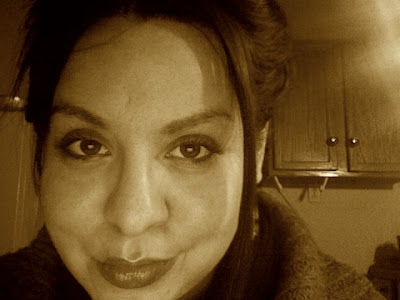 DIANA PANDO
DIANA PANDO
Talk about the differences in each. Is there a genre you feel is your "favorite?"As an emerging writer, I think my strengths are poetry and fiction writing. I’m dabbling in playwriting because I’m absolutely fascinated by creating dialogue and having actors bring the characters to life. Even though I’ve been doing theatre administration for Teatro Luna they teach me so much about the process.Talk a little about Proyecto Latina. What do you hope it provides for community writers, and book lovers?Proyecto Latina is a wonderful community based initiative between Tianguis Bookstore, Teatro Luna and myself. This open mic takes place every 3rd Monday of the month at Radio Arte and it’s a place for Latina’s to come out and show off their talent whether it’s poetry, fiction writing, belly dancers and Hula Hoopers it’s an open mic that brings together emerging and established Latinas in the arts to share, explore and encourage their creative pursuits. We are impacting that next generation by giving them an outlet to show off their creativity. Irasema Gonzales, owner of Tianguis Bookstore, has done an amazing job of lining up some the best features. There’s even a chismé box where you can drop your anonymous chismé and we read them during the open mic. Please drop in and check it out. Log on to http://www.tianguis.bizWhat are you sources of inspiration? A source of inspiration for me is walking through the city. I’m a big fan of long walks despite a toe spur gone amuck. Anyway, too much information. Friends always look at me with suspicion when I tell them we are just three blocks away. Rightfully, so I guess. Three blocks is the equivalent of ten blocks for me. I’m a wanderer. I love to look at people, places and things. Me embobo luego, luego, especially when I’m in Mexico City. There is nothing like being in the Zócalo on a rainy day. Definitely inspires and leaves me drenched. I always forget my umbrella…What's the role of female friendship in your daily life and as a writer?Funny you should ask this question. It’s my lifeline! I can’t go back to anything else. In 2002, Irasema Gonzales invited me to see a reading of Sandra Cisneros up at Loyola. I was feeling a little lazy and it was cold out. Thankfully, she dragged me out there anyway. It was an amazing reading and what came out of it was such a blessing. After the reading Sandra was signing her book and answering questions. There was this annoying girl with a red shirt talking and talking to Sandra. “Hurry Up” I wanted to yell “We want to talk to Sandra too!” The line finally began to move and when we got there Irasema asked about writing groups and Sandra told us to connect with the woman in red. The woman in red is now a dear friend and fabulous writer. Our writing group consists of Lizann Acosta, Professor of World Literature & Teatro Luna Artistic Associate, Irasema Salinas, Tianguis Bookstore Owner, Family Dr. Yolanda Cardenas, Magda Banda Ph.d Candidate in Comparative Education and me. Sandra probably has no idea but she’s our writing group madrina.Where would you like to be creatively and professionally in ten years? In ten years, I will be producing consistent work in different generes of writing, collaborating with other Latinas on projects, encouraging Latino professionals to support the arts through philanthropy, create the Mariposa Atomica Arts Fund and do advocacy work for the arts. Latinos enrich the arts in the city of Chicago and it’s important that we support and cultivate those efforts.Tell us something not in the offical bio.I have an 800 pound Dalmation and he’s more than a decade old, I’m a mascara junkie and my favorite mantra is vision + action = Reality.
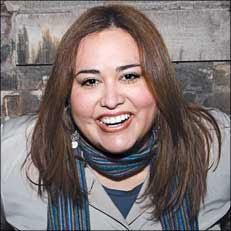 TANYA SARACHO
TANYA SARACHO
(Courtesy Time Out Chicago)
Talk about the differences in each. Is there a genre you feel is your "favorite?"I'm mostly a writer for the stage. I don't have a talent for poetry. I respect poets immensely. To be able to structure and mold words aurally and rhythmically is a talent I truly admire.Talk a little about Proyecto Latina. What do you hope it provides for community writers and book lovers?I can't believe we've been doing Proyecto Latina for two years now. I remember the first time we did it, and how we filled Meztli Cafe and how every one was excited about every performer. You could feel the electricity in the place. Not much has changed, the location perhaps, but people are still excited to hear and support new work by Latina writers-of all genres, not just poetry. It provides a much needed outlet and cocoon to nurture our work.What are you sources of inspiration? What's the role of female friendship in your daily life and as a writer?All my plays are about females. I don't think that's limiting in the least; They all deal with a female central character and I can't deny it, each and every one has at least a bit of coloring that I draw from the women in my life. My mother, my sisters, my Teatro Luna sisters (who are more than friends)... I take the ribbons of vernacular from their mouths and plaster them on the stage. Their words are much more brilliant than mine will ever be. They are wise and funny and flawed. It's my friend's Yadira's zinger lines and her obsession with the perfect meal. It's my friend Miranda's struggle for her dreams and the sting failure causes. It's Tatiana's depression and her unwillingness to come to surface, but her attempt at it every day. It's my friends navigating their contradictions. Those things are much more interesting than anything I'd come up with on my own. Now I might piss people off. Make them angry because I just take one tiny little shade of blue here, or a smudge of brown and they think that's definitive of my opinion of them. But that's never the case. I am often in trouble for it though.Where would you like to be creatively and professionally in ten years?I'd love to be feeding myself fully with the work. Sharing it with as many people as possible. In whatever form. Whatever that means. Whether bigger stages. More productions. Far reaching publications. I'm not sure what that means, but I'd like to have figured it out and be in a place to open doors for other people. Be on the founding stage of programming that makes sure our voice is being heard. In ten years I would have liked to have gotten out of my myopic state and attempt a period piece about hoodoo in the American South during the late 1800's. Nothing to do with Latinidad. That's just a little project that has been rattling in my brain. But it's a long time for that one. In a decade, I'd like to have a cannon of work I can be proud of, but having the best yet to come. Also, in ten years Teatro Luna will be an institution; financially healthy, administratively strong, artistically excellent. Still doing the work.Tell us something not in the official bio.I am addicted to divination and getting my cards read. Every week. Every. Week. My name is Tanya Selene Saracho Armenta, and I am a divination addict.
 DIANA HERRERA
DIANA HERRERA
Talk about the differences in each. Is there a genre you feel is your "favorite?"I don't work too much in poetry, except what I write in my journals that will never been shown to ANYONE 'cause it's really bad poetry! But here we go with the other two. My favorite has to be playwriting because I think I have a God complex. Seriously, it's intoxicating to create this whole world and populate them with these people that use YOUR WORDS to express themselves…then if you're lucky you get a chance to see it LIVE!! How cool is that? Also, though…there is that moment of CONNECTION. When you make a bulls-eye with the hearts of your audience members. There is nothing as gratifying as when someone comes up to me after a show and tells me, you were writing about me. I wrote a piece in "The Maria Chronicles" about visiting my brother in prison, and after shows I had several people tell me about their experiences with family members in prison. One lady told me that after my piece she reconciled with her brother and visited him for the first time in years. That really touched me. It might sound trite, but it's true…writing plays for me is like reaching out and saying "I'm not alone, you are not alone…for this moment we will be taking this journey together". I write because sometimes these feelings I have are so intense it becomes necessary to overflow them onto paper. I chose to share my journey, though, instead of locking it up in a diary (well, except my poems. Those don't need to be shared!).So where does performance fit in? To me, performance is another level of connection with the audience. It's very cathartic, and it's wonderful because you get instant gratification…laughter during a one-liner delivered just right, silence during a dramatic moment…applause. Oh, the applause! Performing is such a high, because you are on this tightrope wire where any sudden change (even something like the theater being too hot or the seats too uncomfortable) will distract your audience…you have to EARN their attention…but once you've earned it what a RUSH.Talk a little about Proyecto Latina. What do you hope it provides for community writers and book lovers?I've enjoyed participating in Proyecto Latina in the past…unfortunately I've been absent from the monthly events for a while. However, I think it's such a wonderful opportunity for new artists…and I LOVE that there is a set limit of people that can perform, that it's a 5 minute time limit and that there is a featured performer. That is key…to be able to enjoy these "tastes" of performance without being overwhelmed by a 4 hour open mike. I know being able to hear various artists has inspired my own writing. I'm hoping I can start attending again…I've missed it!What are you sources of inspiration? What's the role of female friendship in your daily life and as a writer?My family is a HUGE source of inspiration for me—we have this carefully honed sense of humor that I use in my writing. They are very supportive of me—I talk a lot about them in my pieces and I haven't been disowned. Yet. I love comedy, so of course I'm all over female writers like Tina Fey—even watching the old episodes of The Carol Burnett Show gives me inspiration as a writer. Currently I'm working on a two-woman show, and we are using "The Search for Signs of Intelligent Life in the Universe" as inspiration…Jane Wagner and Lily Tomlin collaborated on this piece, and it's amazing.Where would you like to be creatively and professionally in ten years?Creatively, I'd like to still be writing and getting my work produced…if I can perform occasionally that would be a bonus. It's hard because I do have a family now, and I'm the primary breadwinner…so not only do I have to balance work with family, I have to find time to write and stay involved in projects as well. The good thing is that my husband is VERY supportive—in fact, he's the one that keeps pushing me to take on these projects and he's great about covering the night shifts at home, taking care of our daughter and the house. So it's just a matter of figuring out what the next step is…the point is, I can't figure out next year, much less TEN years from now!!Tell us something not in the official bio.I am a HUGE fan of science fiction—my favorite authors include Ray Bradbury, Richard Matheson, HP Lovecraft, Charles Beaumont…and I LOVE TV shows like "The Twilight Zone", "Heroes", "Lost"�anything with a sci-fi edge to it! And yes, I was one of those geeks that stood in line for Star Wars tickets. Han Solo was my first crush.
xxxxxxxxxxxxxxxxxxxxxxxxxxxxxxxxxxxxxxxxxxxxxxx
Women and Creativity Conference/Lisa Alvarado Shameless Self-Promotion Department Gente: I've been blessed enough to have been asked to perform
The Housekeeper's Diary at the conference --
Friday, March 7, at 8 PM at the
National Hispanic Cultural Center's Roy E. Disney Center for the Performing Arts, as well as a reading for high school students at the Center's Wells Fargo Auditorium, Monday, March 10th at 10 AM.
Conference Info:
Women and Creativity 2008 is organized and presented by the
National Hispanic Cultural Center in partnership with more than 25 local arts organizations, artists, writers and independently owned-business. This year, we have an inspiring offering of more than 50 exhibitions, performances, workshops, classes, and engaging discussions in Albuquerque and Santa Fe.
Women and Creativity partners invite you to dedicate an afternoon, evening or entire weekend in March to attend events and workshops that awaken and nourish your own creativity and support the creativity of our communities. Although we shine a special light on women’s creativity during this festival, we invite and encourage the participation of men at all events.
The National Hispanic Cultural Center, along with our partners in
Women and Creativity 2008, believe that creativity, art and self-expression are central to sustaining healthy individuals, organizations, business and communities – so, join in and celebrate the creative women in your community and the creativity inside yourself.
There will also be a fabulous
PEÑA FEMENINA Sunday, March 9th at
NHCC's LA FONDA DEL BOSQUE;Other Artists:
Alma Jarocha,
Leticia Cuevas, Anabel Marín, Otilio Ruiz, Victor Padilla
Jessica López
Bailaora Xicana, Flamenco
marisol encinias, vicente griego, ricardo anglada
Lenore Armijo
Angélica
Cuevas
National Hispanic Cultural Center 1701 4th St, SW Albuquerque, New Mexico
More Conference News from Demetria Martinez
On Saturday, March 8 at 3 p.m. the first-ever Spanish-language anthology of work by women who reside in New Mexico will be unveiled at the National Hispanic Cultural Center in Albuquerque. Titled Metamorfosis, the book was co-founded by Demetria Martinez, Rosalee Montoya-Reed and Maria Nieves de Abajo Bajo. Please join us to celebrate International Women's Day, poetry, the Spanish language and creativity. A reception will follow. Please RSVP at 724-4777.
And Lastly, news from La Divina, Johanny Vasquez
Hola to Everyone: I will be participating at the Nuestras Voces: Women's Poetry Night at the University of Illinois Urbana-Champaign this Thursday, March 6, 2008. The event will take place at from Caffe Paradiso7:00 to 9:00 pm. This will be my first time at U of I, so I'm extremely excited. If you live in the area or know people that live in Urbana/Champaign, please come by or let them know. For more information got to my blog at:http://johannyvazquezpaz.blogspot.com/ or to the University Site at:
http://www.mechauiuc.org/ThursdayChicanasLatinasInTtheArts.html Hasta la vista, Johanny
Lisa Alvarado

By: Lisa Alvarado,
on 2/27/2008
Blog:
La Bloga
(
Login to Add to MyJacketFlap)
JacketFlap tags:
memorial,
creativity,
social change,
Juan Felipe Herrera,
spirituality,
poetry,
poet,
women and performance,
social change,
memorial,
National Hispanic Cultural Center,
raulsalinas,
Juan Felipe Herrera,
social commentary,
women and performance,
National Hispanic Cultural Center,
raulsalinas,
Add a tag
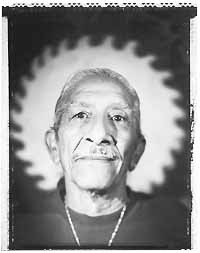
photo of raulsalinas by Bruce Dye
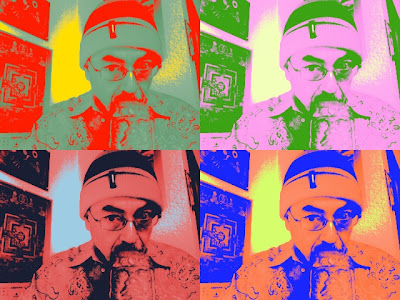
From Lisa, La Blogista: We hope this stirs and ignites you. Please leave a comment and more importantly take raulsalinas' example to heart....Gracias to Juan Felipe Herrera
hail raúlrsalinas :: 1934 – 2008 :: hail liberationlove raúlr was in red. he came in lower-case, strutting down thru the brown cadre in red, a red bandanna across his forehead & taut around his black tresses down to his shoulders, smilin, boppin’ slow & glowin’ hard, in blue tramos planchados & curled to show the calcos spit-shined black solid, bluish tattoos, turquoise rings & gold medallions, a slung-fine chain swingin’ down the black spaghetti-thin belt, under the amber light in the center of the waiting audience, this is where the street-royal carnal found his calling, throttled the mic & peered into the brown cadre huddled on the floors, some of us squeezed against the shadowy aisles, the rest of us in crescent shaped circles, in strange awe, smeared hot against each other’s shoulder bones, the dark jeweled man in red stood under that first-time sparkle-light, his veined muscled arms swayed at his sides, then, he spoke, his bold baritone sounds found a silky-river way into our head, then coursed through our blood as if we were one blood, what was he all about? what was happening to us? where were we headed, now that we had been set off in motion? raulr was riffin’, blowin’, boppin’, snappin’ spittin’, talkin’-singin’ for the new freedom-body, without the locks, fetters & guards of officialized history, policies, and summations of our multi-dimensional self. november 13th, 1973, raulr appeared in the morning, at the floricanto first national chicano literature conference at USC, thirty-eight years old, one year after he had finished doing his time at leavenworth penitentiary, i sat in the center row, dressed in a tzotzil tunic i had brought back from chiapas in ‘70, miguel mendez, tomás rivera, teresa palomo acosta, zeta acosta by the doorway, then raulr popped the mic again & flowed into “un trip thru the mind jail y otras excursions,” he was speakin’ black, caló, tex-mex, chicano & some kind of san francisco beat mantra chakra choppin’ language meant to pierce your awareness: who are you? who did you think you were? what is oppression? how is it constructed? how many of your rooms does it occupy? who else resides in these chambers? is there a way out? then, the baritone voice slid back into the crimson body under the lights – raúlrsalinas ambled away, into the fresh trembling borderless nation. raúlr’s nation was borderless, he had crossed it, on foot as on the page & the stage, speaking, riffin’ & teaching human verses & unity actions – from working class “barbed-wired existence” barrios, from the land of high school force-outs, from grave stones of bullet-riddled camaradas, from “narcotic driven nerviosidad,” from suicided “colonias” & familias, to “ex-convictos activistas doing good in cities of chavalos gone bad,” to “trenzas indigenas,” dedicated to a revitalized indi@ collectivity, to “cantor de cantinas, pasándole poems a perennial pachukos prendidos, hoping to ease their pain,” “cantando colores de flores in arco iris danza,” ”learning en la lucha,” honoring the oak tree at the margins of a desolate collective capitol, honoring “indias, comadres wearing ski-boots so essential para caminar.” raúlr too was a walker, a walker-writer of the chican@ inferno & finder-seer of "rainbow people spirit." raulrsalinas was a true liberator: a kind fire-word man of soul-jazzed languages, a writer within & without prison walls, a socio-political mind-jail wall-breaker-scribe-singer, a collector, reader & translator of stolen cultura-tablets, a speaker of & for tender homage & eulogy to the invisibilized, a fearless warrior seeking the paths to our indigenous selves, lands & pueblos, relentless in responding to the “animales transnacionales” & militarized hydra machines, a shaman in demin, re-conjuring herstories of unwritten pachuka murders & oppressions across the southwest & pacific northwest, undoing the anthropological & sociological tyrannies of el pachuko, that is, all of us, in lower-case motion – raulr sings in a mid-fifties bebop alto & baritone gold-gilded sax voice, from pine ridge to chiapas, from el barrio de la loma to the diné rez, from shoshone & arapaho tierras to la selva lacandona, healing-gathering, healing-working – “respeto, paz y dignidad,” raúlr offers his life-quest harvests to all of us. what else, raúlr? you were speaking of lower-case love – everything we all are, have been & will ever be. in liberation --juan felipe Herrera, 2/25/08 xxxxxxxxxxxxxxxxxxxxxxxxxxxxxxxxxxxxxxxxxxxx
And from poet Oscar Bermeo:Just wanted to pass along that last week, there was a tribute to raulsalinas
Among the readers sharing their thoughts and presenting the work of Raul
Alejandro Murguía
Tomás Riley Francisco
J. Dominguez
Marc Pinate
Naomi Quiñones
Leticia Hernández-Linares
Lorna Dee Cervantes
Nina Serrano
Jack Hirschman
Darren de Leon
xxxxxxxxxxxxxxxxxxxxxxxxxxxxxxxxxxxxxxxxxxxx
More teatro news, Denver-style
The Comedy of Errors by William Shakespeare Thursday – Saturday, February 28 – March 1 Thursday – Saturday, March 6 – 8 7:30pm King Center Rawls Courtyard Theatre Auraria Campus, Denver Tickets: $12 General Admission $5 UC Denver students Sponsored by: Theatre, Film and Video Production Department.
José Mercado, new Assistant Professor of the Theatre, Film & Video Production Department, directs a contemporary telling of a classic comedy driven by mix-ups, coincidence and slapstick humor, with the events confined within the action of a single day. The Comedy of Errors is Shakespeare’s earliest, shortest and most farcical play. It tells the story of two sets of identical twins and the wild mishaps that occur through mistaken identity. Before joining the faculty at UC Denver, Mercado was head of the theatre department at North High School where he directed "The Zoot Suit Riots", the first high school production to play at Denver Performing Arts Center’s Buell Theatre. Prior to teaching, he worked as an actor in Los Angeles after earning his Master of Fine Arts degree in Theatre from UCLA. He is a member of the Screen Actor’s Guild and Actor’s Equity Association. He is also a member of the Denver Commission on Cultural Affairs.
xxxxxxxxxxxxxxxxxxxxxxxxxxxxxxxxxxxxxxxxxxxx
Women and Creativity Conference/Lisa Alvarado Shameless Self-Promotion Department Gente: I've been blessed enough to have been asked to perform
The Housekeeper's Diary at the conference --
Friday, March 7, at 8 PM at the
National Hispanic Cultural Center's Roy E. Disney Center for the Performing Arts, as well as a reading for high school students at the Center's Wells Fargo Auditorium, Monday, March 10th at 10 AM.
Conference Info:
Women and Creativity 2008 is organized and presented by the
National Hispanic Cultural Center in partnership with more than 25 local arts organizations, artists, writers and independently owned-business. This year, we have an inspiring offering of more than 50 exhibitions, performances, workshops, classes, and engaging discussions in Albuquerque and Santa Fe.
Women and Creativity partners invite you to dedicate an afternoon, evening or entire weekend in March to attend events and workshops that awaken and nourish your own creativity and support the creativity of our communities. Although we shine a special light on women’s creativity during this festival, we invite and encourage the participation of men at all events.
The National Hispanic Cultural Center, along with our partners in
Women and Creativity 2008, believe that creativity, art and self-expression are central to sustaining healthy individuals, organizations, business and communities – so, join in and celebrate the creative women in your community and the creativity inside yourself.
There will also be a fabulous
PEÑA FEMENINA Sunday, March 9th at
NHCC's LA FONDA DEL BOSQUE;Other Artists:
Alma Jarocha,
Leticia Cuevas, Anabel Marín, Otilio Ruiz, Victor Padilla
Jessica López
Bailaora Xicana, Flamenco
marisol encinias, vicente griego, ricardo anglada
Lenore Armijo
Angélica
Cuevas
National Hispanic Cultural Center 1701 4th St, SW Albuquerque, New Mexico
xxxxxxxxxxxxxxxxxxxxxxxxxxxxxxxxxxxxxxxxxxxx
Teatro Luna Fabulousness!
Teatro Luna has a BRAND NEW SHOW opening on March 6th, but you can catch it now! This Saturday and Sunday see a sneak preview of Teatro Luna's most intimate show yet... SOLO TU, a collection of four interwoven solos all about different women's experiences with PREGNANCY.
One woman thinks she's finally built the perfect family - Mom, Dad, Cute Kid- until an invasion of mice makes her wonder what's really going on. Another woman finds herself caught up in the worst kind of Baby-Daddy-Single-Mama Drama. Meanwhile, a woman in her third year of trying to get pregnant decides her pregnant friends make her want to vomit, and her close friend wrestles with pro-life activists, hospital robes, and how she feels about having an abortion in her 30's.
Saturday @ 7:30 pm and Sunday @ 6pm
SHOW RUN: March 6-April 6 2008Thursdays, Fridays, Saturdays @ 7:30 pmSundays @ 6pmChicago Dramatists 1105 W. Chicago Ave, at MilwaukeeTickets $15, Student and Senior Discount on Thursdays and Sundays only, $10$12 Group Sale price, parties of 8 or moreFor tickets, visit www.teatroluna.org
Lisa Alvarado
CURRENTLY PLAYING:
MACHOS
After a sold out run at Chicago Dramatists, MACHOS is moving to the 16th Street Theater in Berwyn, IL, conveniently located near the Blue Line Austin stop. Tickets are already on sale, and I hope you will help me spread the word! We've never moved a show before, so this is a first for us. But we couldn't pass up the chance to keep the show going! We're all so in love with our guys! Here's the scoop:
MACHOS At 16th Street Theater 4 weeks only! January 25 February 17, 2008
Fridays at 7:30 PM Saturdays at 5:00 PM Saturdays at 8:00 PM Sundays at 6:00 PM BUY TICKETS ONLINE at www.brownpapertickets.com/event/25539

By: Lisa Alvarado,
on 9/20/2007
Blog:
La Bloga
(
Login to Add to MyJacketFlap)
JacketFlap tags:
poetry,
theater,
social commentary,
women of color,
women's studies,
social change,
women and performance,
Teatro Luna,
peformance,
Add a tag
OYE-LISTEN! A Bi-monthly Performance Series
About the performance and presenting artists -
Sharmili Majmudar & Amisha Patel, Dawn Herrera/Terry
Teatro Luna and Jane Addams Hull-House Museum join forces to showcase new works by emerging, Chicago-based performing artists. This collaboration aims to provide women artists of color a space to share personal stories and reflect on contemporary social issues facing their community. By remaining true to the lives and experiences of women of color, this series creates bridges among Chicago ethnic communities.
OYE-LISTEN! MONDAY, September 24, 7-9pm
Our Living by Sharmili Majmudar & Amisha Patel
Our Living a collaborative spoken word piece with musical background written and performed by two Gujarati Indian American women that interweaves our experiences and explores identity, sexism, racism, colonization, and re-emergence through reclaiming our true selves. In this piece, we remind ourselves of how our living depends on each other, despite and in the face of the oppression we experience. Through poetry, we reclaim truth and each other.
PORTALES: Mitologia Subjetiva (Matrilineal) by Dawn Herrera/Terry
Something between monologue and performance, PORTALES is a gently surreal portrait of a personal history, offering one possible account of the how borders may be internalized and inhabited. A work in progress, PORTALES will eventually weave together more strands of family narrative to further explore physical, cultural, emotional and spiritual legacies.
For more information about the artists, please visit: www.hullhousemuseum.org.
7pm - 8:40pm Performance
8:45pm - 9:00pm Post-show discussion
Jane Addams Hull-House Museum
Residents' Dining Hall
800 S. Halsted St, Chicago, IL
This is the third event in the series; the first two were standing room only:
make your reservation soon!
This event is FREE. Light refreshments will be served.
Reservations are recommended,
call 312.413.5353
This event is ADA accessible. If you have a disability and need additional accommodations to attend this event, please inform us at the time of reservation
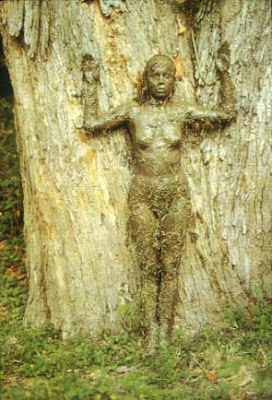
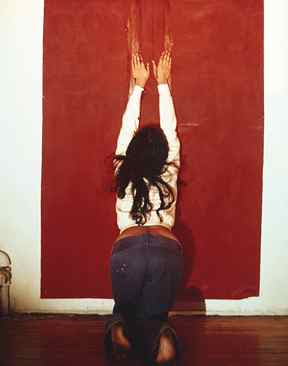
Ana Mendieta was a Cuban performance artist who lived in New York in the 1970’s. The title Where Is Ana Mendieta, not only refers to the suspicious circumstances of her death, but to the nonexistent presence of the work of women artists in mainstream exhibitions, to the absence of work that portrays the aesthetic rooted in Latino cultural identity.
Mendieta boldly explored women’s identity, sexuality, and spirituality in pieces that were deceptively simple. Her work was constructed from the elements themselves, dirt, water, and light in their most basic forms; her themes revolved around the ideas of burial, rebirth, submersion in the natural world. From a perspective beyond the dominant culture's construct of nation, a construct of governments, the hegemony of conquerors, Mendieta's work reverberates with a older, indigenous idea of nation. It challenges the viewer to envision an idea of nation and identity based on a direct relation to the Earth itself.
In a series entitled Tree of Life, Mendieta flattened herself against a large oak tree. She is naked, covered with gesso and paint to simulate tree bark. Where does the tree stop and Medieta begin? Where do we stop and our connection with nature begin? Simply done and deeply resonant. I immediately saw a connection between this piece and a Mexican/Chicano idea of rootedness to place that is not hemmed by borders, but by history and ancestral links to land, to nature itself.
In another, untitled series, Mendieta is shown in a series of photos. Again, she is naked, this time in an isolated field. Next to her is a skeleton. The photos show her climbing onto the skeleton, embracing it. She creates a powerful image of the life/death cycle, as well as a quintessential Latino commentary on mortality. At the heart of existence, life and death are united in an eternal embrace. In the midst of life, its fullness, its lushness, its sensuality, Death is constant companion. While modern, European-based culture constantly seeks to avoid aging and mortality, there are traditions that accept its centrality. Mendieta brilliantly illustrates that death is both the beginning and endpoint of all things.
Mendieta worked closely with a variety of feminist artists, but did not label herself as feminist, and I understand the reticence in using the label. The women's artistic community did not offer a truly supportive relationship, and while she had meaningful connections with individual artists, her work was not be adequately appreciated by feminist and post-feminist critics. In a nutshell, Mendieta did not invent a new relationship to body and Earth, she reclaimed an ancient one, but was never embraced by the 'larger' artistic community.
I was profoundly moved by her work. The work is poetry, visual poetry, poetry made flesh. These are clear, visceral, and direct images that I hope to use as a touchstone in my writing and performing, particularly in performing. I want to tell a personal and universal story with my body, and Mendieta has created a standard for me, as well as strengthening and deepening a physical lexicon.
Blocker’s writing is dry and extremely formal, making this difficult going as a reader, but don't be dissuaded by that. I wonder if some of the density of language was more an expression of Blocker's own inability to grasp and express the power and simplicity of Mendieta. However, the book sings when Blocker allows the work to speak for itself.
ISBN-10: 0822323249
ISBN-13: 978-0822323242
xxxxxxxxxxxxxxxxxxxxxxxxxxxxxxxxxxxxJane Blocker is a specialist in contemporary art and critical theory. She offers courses such as Art Since 1945, Contemporary Art, Alternative Media: Video, Performance, and Digital Art, as well as courses on gender and sexuality, and 20th century theory and criticism.
Her research has focused primarily on performance art as it developed concurrently with postmodern, feminist, and constructionist theories. Her first book, Where is Ana Mendieta? Identity, Performativity and Exile (Duke University Press, 1999), considers the artist's work in relation to the performative production of identity. What the Body Cost: Desire, History, and Performance. (Minneapolis: University of Minnesota Press, 2004), her second book, critically examines the historiography of mid-twentieth century performance. Her current book, called Seeing Witness: Essays on Contemporary Art and Testimony, examines the witness as a privileged subject position by analyzing installations, performances, photographs, and films by such artists as Alfredo Jaar, James Luna, Eduardo Kac, Christine Borland, Felix Gonzales-Torres, and Ann Hamilton.
In addition, she has published the following essays: "This Being You Must Create: Transgenic Art and Seeing the Invisible," Cultural Studies 17, no. 2 (2003): 192-209; "A Cemetery of Images: Meditations on the Burial of Photographs," Visual Resources XX, no. 2 (May 2004) ; "Binding to Another s Wound: Of Weddings and Witness," in After Criticism: New Responses to Contemporary Art, edited by Gavin Butt. (London: Blackwell, 2005); "Failures of Self-Seeing: James Luna Remembers Dino," Performing Arts Journal XXIII, #1 (January 2001):18-32; "The Art of Renters," in From Your House to Our House, exhibition catalogue (Atlanta: Nexus Contemporary Art Center, 1999); "Woman-House: Architecture, Gender and Hybridity in What's Eating Gilbert Grape?," in Camera Obscura 39 (November 1998):126-150; "Ana Mendieta and the Politics of the Venus Negra," in Farquhar, et al, eds. (Un)fixing Representation, special issue of Cultural Studies 12, #1 (January 1998):31-50; "The Bed Took Up Most of the Room," in Peggy Phelan and Jill Lane, eds., The End(s) of Performance (New York: N.Y.U. Press, 1997); and Nancy Spero/Leon Golub: Contemporaries, exhibition catalogue (Detroit, MI: Wayne State University, Elaine L. Jacob Gallery, 1997).
Lisa Alvarado

By: Lisa Alvarado,
on 8/15/2007
Blog:
La Bloga
(
Login to Add to MyJacketFlap)
JacketFlap tags:
theater,
women of color,
women's studies,
LGBT,
T,
Latina performance,
performance art,
women and performance,
Teatro Luna,
Tianguis,
multicultural literature,
Add a tag
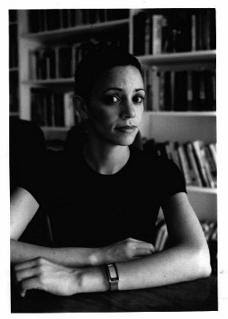 Coco Fusco
Coco Fusco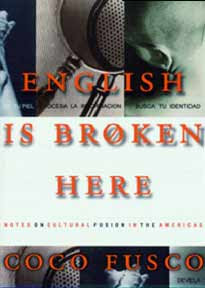
In this series of essays,
Fusco concentrates on examining the work of Latino/a performance artists born in the U.S., and the themes of “otherness” and culture clash. Performers such as Andres Serrano, Laura Aguilar, and
Fusco’s longtime collaborator, Guillermo Gomez-Pena, are held up to the light for close consideration.
In the essay targeting her collaboration with Gomez-Pena, she details a performance done in public venues (museums, municipal buildings) where she and Gomez-Pena created a living exhibit, posing as “specimens” of a fictional indigenous tribe. They displayed themselves in a cage, with dress and talismans gleaned from Pan-Latino/a and popular culture. Her commentary on the experience, on being the observed ”other,” and what she saw as the fascination of the predominately Anglo audience as observer, underscored the themes of objectification and the blurring of public and private.
I had mixed feeling in reading about this performance. On the one hand, I think it was a bold and important artistic move to skewer the dominant culture's idea of 'preservation' and '
curation ,' to challenge it as a kind of pandering to that culture's fascination with they perceive as the 'exotic' indigenous. Never mind that in many cases, these exhibits are only possible as a direct result of colonialism, genocidal practices, and grave robbing. How different is
Fusco's and Gomez-Pena's living exhibit behind bars from the guided tours held on the the
rez, or in barrios, in farm worker camps?
I wonder to what extent the audience grasped that under the rubric of "Latino," there exists hundreds of complex societies, with a heterogeneity of language, practices, rituals. I'm concerned that the work only engenders the knee-jerk, superficial shudder of guilt in primarily white, middle-class audiences.
In the post-performance discussions of
Housekeeper's Diary, the comments from some middle-class people reveal discomfort and their own lack of knowledge as to how to even treat their own maids in a more real, humane way. But there are also comments about what is the vitality and vibrancy of working people--comments about the inherent dignity they sense, despite an external objectification. This, to me is the kind of dialog and engagement I find most satisfying as a performer.
While those points of divergence are significant, I felt I had read something that will challenge me to keep thinking about the political context of performance. One last reservation with this book was
Fusco’s tendency make referential comments about to different artists, without always placing them in context. This can make for a limited appreciation of the the work as a whole, as well as perpetuate an unfortunate tendency of performance artists conversing amongst themselves. (Particularly since
Fusco plumbs the legacy of imperialism, colonialism in her work, it strikes me as odd that she gears her writing to the art intelligentsia. ) It's a challenge, however, worth the effort of cross-referencing and research for the reader.
ISBN-10: 1565842456
ISBN-13: 978-1565842458
xxxxxxxxxxxxxxxxxxxxxxxxxxxxxxxxxxxxxxxx
Una Notita Del Teatro Luna (A Note from Teatro Luna)
Teatro Luna has a VERY exciting show opening in early November. It is called
Machos, and it is based on interviews with 50 diverse men nationwide. Our ensemble members will be performing as men (we have a movement coach and everything) talking about their lives, their work, and, of course, women. If you'd like to bring a group of students to see the show, please contact
[email protected]. We'd be happy to arrange a group rate, a post-show discussion, or even a classroom visit.
Volunteers Wanted!!!
We desperately need volunteers to help us transcribe the last few interviews. Transcription is a time-consuming, tedious process, but nothing could help us more as we work to finalize our script. We're looking for people who can dedicate 10-12 hours in the next week - a lot of ask, we know! In exchange, we will offer you your choice of $50, 4 tickets to
MACHOS, or 2 VIP tickets to a
MACHOS special event. And of course, a thank you in the program and our undying love. Well, at least MY undying love. I can't speak for everyone. if this sounds like something you can commit to, please e-mail Belinda at
[email protected].
Oye-Listen! Call for Submissions for September & November
So far,
OYE-LISTEN! - a new collaboration between
Teatro Luna and Jane Addams Hull-House Museum- has been a blast. Our June and July series had packed houses and vibrant performances from Yolanda Nieves, Sandra Santiago-Posadas, Lani Montreal, Francis Allende-Pellot, Gesel Mason, Toni Asante Lightfoot, Anida Yoeu Ali, Cristal Sabbagh, Andrea Wukitsch, Keiko Johnson and more. There's still time to join the fun! We are currently seeking performers for slots in September and November.
For submission guidelines or questions, please email to
[email protected].
Proyecto Latina - AUGUST 20thThe next
Proyecto Latina is on Monday, August 20th @ 7 p.m. Our August feature is Stephanie Gentry-Fernandez, she shares from her collection of poems. As always there will also be Chisme box and open-mic . Free. Join us at
Tianguis, 2003 S. Damen.
Stephanie Gentry-Fernandez A native of Chicago's South Side, has been involved with a number of organizations including
Teatro Luna, About Face Theater, and el
Cafe Teatro Batey Urbano. Stephanie has facilitated journaling and poetry workshops for young incarcerated women and adult female survivors of domestic violence. She moved back home to Chicago after a two and a half year stint in the hippy Bay Area. Her work addresses issues like anti-oppression, survival, healing, and hope. Stephanie is currently working as Associate Director of the Chicago Freedom School.
About Proyecto Latina:
Proyecto Latina is a collaborative between
Teatro Luna,
Tianguis, and
Mariposa Atomica Ink. We are excited about showcasing Latina talent and are always seeking outgoing Latina poets and performers for our monthly open mic series.
Proyecto Latina takes place the third Monday of every month. Its an open mic so everything's game: Poetry, spoken word, music, monologues, shorts y en el idioma que prefieras. And if you're too shy to get on stage come and be one of the lucky spectators.
Teatro Luna Upcoming Season!Get ready for a whole year of
Teatro Luna! We have three brand new shows coming up.
Machos, a new ensemble performance based on interviews with men nationwide, opens November 8th.
Solo Tu, a collection of four solo plays about four very different women, opens February 28, 2008.
Restaurant Spanish, an ensemble play about immigration and communication, opens late summer (dates TBA).
Visit us at
www.teatroluna.org or
www.myspace.com/teatrolunaLisa Alvarado

By: Lisa Alvarado,
on 7/5/2007
Blog:
La Bloga
(
Login to Add to MyJacketFlap)
JacketFlap tags:
poetry,
writing,
Chicago,
class,
community building,
women of color,
women's studies,
social change,
women and performance,
East coast,
Cave Canem,
Tara Betts,
Afro-American,
louderARTS,
Add a tag
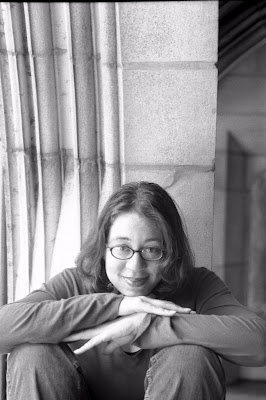
The lovely photo is of an equally lovely and powerful writer, Tara Betts. (Not quite the plain brown wrapper...) It's been almost ten years ago that I was paired with Tara as her mentor in a City of Chicago arts program. To this day, I'm not sure what I taught her, but it has been my privilege to read her work, watch her develop and soar as a writer, a performer, and as a critical thinker. She is a person of crystal clear intent and ethics and it is that clarity and that moral compass that infuses all of her work. Tara is that rara avis who is able to dive into the canon, retrieve what she needs and resurface to the real world where the rest of us dwell. She knows her sestinas, her villanelles, her haikus, but she is not seduced by the prettiness of form over content. Her work is rigorously constructed, but framed with direct, clear language, unambiguous. Tara Betts knows where her loyalties lie --- the African American experience, femaleness, urban life, the place where class and race intersect, and as readers we are all the better for it. Take a close look at the pieces following this interview, and you'll see exactly what I mean.
xxxxxxxxxxxxxxxxxxxxxxxxxxxxxxxxxxx
Describe your odyssey in becoming a writer. How does African American and female identity influence your work? What would you say are your major influences, both personally and in a literary sense? My major influences initially were ntozake shange, Maya Angelou, Paul Laurence Dunbar and Langston Hughes. When I was around 12 or 13, I kept a diary a little before this point, but began writing poetry shortly after I read I Know Why the Caged Bird Sings. I had always been a reader, but I didn’t always see books in the library that looked like they talked about people of African descent at all. When I was in high school, I worked at the Kankakee Public Library and learned the stacks better. Sometimes, I would sneak off and read. It was then that I aspired to be a journalist so Rolling Stone, Essence and U.S. News & World Report were also part of my obsession as well.
When I started attending Loyola University on the North Side of Chicago, I kept writing, indulged more and more in Vibe and The Source, and eventually did an internship in New York at BET Weekend magazine in conjunction with the New York Daily News office. It was an amazing summer too. It solidified that I had to keep writing, even though I was a student activist and editor for The Loyola Phoenix. It was in college that I read more about Hurston, the Negritude poets, Toni Morrison, Fanon and Cheikh Anta Diop.
Although I felt like these were eye-opening experiences, I felt like I was always challenged by the more conservative influences on a highly Republican, very Catholic Jesuit university that somehow managed to talk about social justice issues.
By the time I was in my second year at Loyola, I had started organizing poetry readings on campus. This was before poetry became trendy again, so I shared some of my favorite poets and collaborated with other student organizations to make the readings happen. I remember inviting Malik Yusef to campus and bringing Ramona Africa from MOVE Organization with help from Tyehimba Jess. Tyehimba and Malik were the first two poets I met on the Chicago scene. Shortly before I graduated from Loyola in 1997, Malik Yusef gave me my first poetry feature at The Cotton Club on Michigan Avenue. I started reading at Lit X, this jazz club called Rituals, Afrika West bookstore, Guild Complex and eventually Mad Bar, which is where I started slamming. I slammed once or twice at Green Mill, but it didn’t feel like an audience of my peers, even though I enjoyed the work from poets like Sheila Donahue, Cin Salach, Regie Gibson, Dan Ferri, Maria McCray, Marc Smith and most vividly Patricia Smith.
At this time, I was also exploring the feminist possibilities in my poetry. I performed with Sharon Powell, Marta Collazo and other women in a show about menstruation called “The Empress Wears Red Clothes.” I had sort of exited the hip hop heavy part of my life, even though I was still writing pieces here and there, going to shows, hosting a hip hop radio show called “The Hip Hop Project” with my good friend Lional Freeman (AKA Brotha El), meeting graf writers and admiring dj skills.
After leaving “The Hip Hop Project” and doing readings for about a year and a half, I started to slam at Mad Bar. I was on the first two Mental Graffiti teams in 1999 and 2000 with poets like Mars Gamba-Adisa Caulton, Marlon Esguerra, Dennis Kim, Shappy and Lucy Anderton. Although slam became a very stressful thing for me, I got to spend time with a wide range of aesthetics and personalities that I really loved and admired for different reasons. I also had the opportunity to co-host, curate and promote an all-women’s open mic and performance space called Women OutLoud with women like Mars, Lucy, Anida Esguerra and Krystal Ashe.
While I was slamming, I started getting more into a range of poets like Pablo Neruda, Gabriela Mistral, Julia de Burgos, Sonia Sanchez, Jayne Cortez, Carl Sandburg, Lucille Clifton, Gwendolyn Brooks, Stanley Kunitz and others. I also started workshopping with various poets through the Guild Complex. My first workshop leader was Sterling Plumpp. He pushed me to keep writing, read more sisters and just be persistent. He’s a master of the poetic line and very much a blues man. More people should be reading his work. I also went on to do workshops with Afaa Michael Weaver who pushed me to be honest, vulnerable and study a diverse range of writers. I really wanted to just read writers of color at one point, and he still reminds me of how there is so much to learn from everyone. Lucille Clifton and Quincy Troupe were also poets that I participated in workshops with and these experiences led to my real urgency to be a part of Cave Canem, a workshop/retreat for writers of African descent started by Toi Derricotte and Cornelius Eady. There are too many poets to name that I have met through this retreat that have fed, taught and inspired me.
The students at Young Chicago Authors were also a big influence on my writing. Through YCA, I began teaching writing classes. Since I had to teach what I was doing, I was more conscious of what I did or explaining why a certain work moved me. I also got to develop my own classes, like an author study on Neruda, Hip Hop Poetics, Poetic Forms by Communities of Color and Women Writers as Essayists. By the time I left Chicago, I had firmly rooted my voice that I think is always expanding and refining itself. I had started the MFA Program in Poetry at New England College (graduated in January 2007) and moved to New York. Now, I think I’m trying to read as much as I can in fiction, new poets, history and the classics that I need to catch up on. Wanda Coleman, Martin Espada, Marilyn Nelson are just a few of the poets who really move me these days.
You've written extensively about African American labor leader, Ida B. Wells. Describe her significance as subject matter.
It’s funny you would ask about the Ida B. Wells’ poems. I started writing about her years ago, and I’ve never quite finished the series that I set out to do. I read about her and her own books like A Crusade for Justice, Southern Horrors and The Memphis Diary edited by Miriam Decosta-Willis, and I started researching lynchings. This was around the time that Without Sanctuary, a book of photographs taken at lynchings, was released.
In 1892, one of Wells’ close friends Thomas Moss and the co-owners of the Black-owned People’s Grocery Store were basically lynched for offering better products and better prices to Black customers than the white storeowners. Wells had already initiated a public transportation boycott and filed a successful lawsuit that was eventually repealed when she had been thrown off the train for refusing to go to a smoking car. She refused so adamantly that she dug in her heels, and it took two men to remove her after she bit the conductor on the hand. In fact, she started her paper The Free Press in response to this ousting, and convinced record numbers to leave Memphis and stop taking public transit.
As a result, at a time when women were not even considered able to handle the strong material of journalism, Wells convinced people to do things with the facts that she gleaned. She also started the first suffrage organization for Black women in Illinois, helped start the NAACP, ran an organization for Black men that was similar to the then-segregated YMCA who would not house or notify Black men of employment opportunities, and initiated the anti-lynching crusade in the U.S. and the U.K. So, her radical scope really drew me to her, but also some of the things she did that were just hilarious. For example, her daughter Alfreda Duster describes how she went into a department store in Chicago and was waiting to be served. Of course, they acted like this Black woman was not even standing there, so out of exasperation, she drapes a pair of men’s boxers over one shoulder and starts to walk toward the exit. Then someone finally asked her what she was doing, and she told them “trying to buy these.” So, her ties to Chicago, her sense of humor and strength, and her need to document her place in history when so many women were forgotten, omitted and erased, has brought me back to her example again and again.
You made a strong connection to Latino poets, Latino poetry and culture. Can you talk more about that?In my youth, I studied Spanish in high school, and I hardly knew any people from Spanish-speaking cultures, but when I went to college, I finally met more than Black and white people en masse. I really tried to support all people of color, so I learned a lot and tried to understand how our experiences overlapped and differed. I also took a class with Dr. Susannah Cavallo called Afro-Hispanic Literature where we read writers like Carolina Maria de Jesus, Jose Lima and Nascimiento’s Brazil: Mixture or Massacre.
I would have to say that Pablo Neruda brought the metaphor to life for me in a way that no other poet has. After him, I was drawn to so many others like Xavier Villarrutia, Gabriela Mistral, Cesar Vallejo, Daisy Zamora and anthologies like Martin Espada’s Poetry Like Bread and Stephen Tapscott’s Twentieth Century Latin American Poetry. I also read Chicago-based writers like Luis Rodriguez, Ana Castillo and Sandra Cisneros.
While I was living in Chicago, I got to read with so many Latina women who just wrote things that moved me. Some of them included Brenda Cardenas, the late Sulima Q. Moya, Susana Sandoval, Johanny Vazquez, Beatriz Badikian-Gartler, Katherinne Bardales, and of course, Lisa Alvarado.
In 2001, I had an opportunity to exchange with writers in Cuba at the now defunct Writers of the Americas Conference where my workshop leader was Jack Agueros, and we got to talk to writers like Junot Diaz, Maria Irene Fornes, Achy Obejas and Danny Hoch. While we were there, we met many local writers. One of them, Leo Navaro Guevara moved to the U.S., and his son Anton is my first and only godson.
Now, that I’m on the East Coast, it’s such an amazing experience to see the range of writers like Willie Perdomo, Magdalena Gomez, Tato Laviera, Sandra Maria Esteves, Jesus Papoleto among others. The Acentos series in the Bronx also gave me the chance to see a lot of these poets up close and to hear more of the type of work that I had only read.
What would you describe as your major themes? History, family, politics, and love (mostly because we need to remember why we struggle in the first place).
You've had a lot of interface with spoken word, slam poetry, etc. How would you describe those genres v. 'literary' poetics and form?Spoken word is an untapped wellspring of possibilities. Unfortunately, since people are catering to the lowest common denominator and writing pieces that will garner a shock, laughter or a tour through the spoken word circuit, there is not the same kind of interest in the work that I had before. Now, do I think that the slam offers young writers a chance to build their confidence and articulate themselves clearly in front of an audience? Yes. Do I think that it can lead people to read their work with feeling and internalize the meaning of what they’ve written? Yes. Do I think it can lead to people producing one-person shows, records, verse plays, books, creative collaborations and radical, through-provoking performance? Yes. And lastly, are there too many people competing for little-to-no-paying gigs for the big payoff of three-five minutes on television? Yes.
What most people don’t realize is that performance becomes a job. Even if you love it, you must maintain what will keep you working, and there are contradictions that compel people to ask hard questions about the growth and integrity of their work. Not enough people are asking themselves about that. I also think that if spoken word is continually pigeonholed as slam poetry and watered-down hip hop by wannabe emcees, then it will be relegated to the ghettos of forgotten poetry. There are too many good poets of color coming out of such performative experiences to be limited by this kind of categorization. Spoken Word is a category promoted by NARAS. Oral traditions across centuries and cultures have always existed, so we have to remind people that internalizing what we write and sharing it orally is not new. So, I don’t necessarily think there is a difference in the text, unless you’re a lazy writer who overcompensates through performance. Anything written can be performed, published or exhibited. It’s just about how it’s done.
What would you describe as your core strengths as a writer....where would you like to see yourself grow? My core strengths. Now this is a difficult question. I think it’s been my willingness to always do what I feel like I need to do to grow. I haven’t always made many friends that way, but inevitably I wrote what I wanted and earned most people’s respect. I want to spend more time reading, trying to grow as a critical writer and write more prose. In terms of poetry, I’m intrigued with poetic form and how can we subvert with Eurocentric canonical notions that we have about it. I would like to collaborate with more visual artists and musicians since I’ve often been a solo writer sharing my work.
How would you describe your connection to young writers as it relates to your creative life? My connection to young writers has kept me from being hyper-cynical/critical. They look at the world with new eyes, and when they have the breakthrough moments where they articulate something so honest and challenging for the first time. I live for those moments. Young writers make me always consider what it takes to keep writing new, how does writing work as an art and a disciplined practice. Sometimes, I think it’s only me who keeps me writing, which is true to some degree, but they are the ones who keep me writing.
Where do you see yourself in ten years, personally and creatively?Ten years from now, I’m hoping to have published at least two or three books, not necessarily all poetry, maybe one of them is an anthology. I’ve thought I might have a Ph.D. in African American/Africana/Black Studies (whichever term people think they need to apply), American Studies or Women’s Studies by then. Teaching, traveling and balancing that with a family would be nice. Hopefully, I will be practicing yoga on a regular basis. I remember one time a student at Wright College asked me in a Q & A, what I wanted to do with my life, and I proceeded to tell her about all my professional goals and writerly aspirations when she cut in and asked, “other than that?” I felt like some inner voice had been plucked from my head and embodied in this girl. So, I thought about it, and yoga, having a garden, developing a spiritual life, staying politically responsible and critical and having good friends who could give a damn whether I write or not were my response to her question. All of that is still a work in progress.
What's something not in the official bio? I always liked the fast, gravity-defying rides at carnivals and amusement parks. I recently freestyled on the mic with an all-female Afrobeat band in New York called Femm Nameless.
xxxxxxxxxxxxxxxxxxxxxxxxxxxxxxxxxxx
Not On the MenuIf Portugal was edible, could it be swallowed
like some country fruit, goosebumped as unripe
avocado, heavy with sweet guava wet
that lingers inside the cheeks?
Would Africa taste bitter and glitter
on the tongue from its ripe diamond seeds?
Would the silt of India be the truest curry
bursting a heat against the mouth’s roof?’
Every day an international hors'douvres platter
crosses so many tourist imaginations like
a hectic maitre’de.
There are Indian families in steamy kitchens,
Taiwanese men’s bicycles crisscrossing
Manhattan’s traffic-glutted streets,
Puerto Rican girls smiling for bigger tips
when offering mofongo,
and Cubans proffer mojitos
and freshly killed chicken
for that one night at El Hueco.
America, though, would distance itself
from its bitter Billie Holiday image in stalls
of worldly produce. America would be slick
with campaigns on its nutritional benefits.
America would be so shiny the shellac needs
cracking and peeling. Imagine.
America’s fruit, so sweet it eats the teeth
with its ache.
While movies ripen into
culinary pornography
Eat, Drink, Man, Woman,
Soul Food
Tortilla Soup
Like Water for Chocolate
The cinematic menu sounds
like a veil pulled across the face,
the sweaty thump of samba,
a pinprick protruding
from a map of exotica
where spare grain
of days remains unsampled
since the trees of America
require so much tending.
There Goes the Neighborhoodfor Maxine KuminAerial shot omniscient view bent above
asphalt playground. Sidewalks become
concrete football fields where Brooklyn
accents weigh down boys’ tongues
that count like girls circle one another.
They bend clothesline, extension cords,
double helix style rotations beneath
spinning jumping sneakers.
Speakers turned walls claim
the street as official block
party bidness. Metal drums split
open with orang charcoal guts plead
for red meat, then sizzle relief.
Brownstone stoops fill with girls
clinging to gossip like the new neighbor
holding his golf club bag as if announcing
shift change for baggy pants & oversized
shirt-wearing boys who stand too long on
the corner. Count each baby
in mad math that’s called living.
Take a breath when change claims
one more before you blink.
xxxxxxxxxxxxxxxxxxxxxxxxxxxxxxxxxxxxxxxxxxxxxxxxxxxxxxxxxxxxxxxxx
Some food for thought on visibility, race, class and the publishing industry from La Bloga friend, Manuel Muñoz:
African-American novelist Martha Southgate's wonderful
and thoughtful
essay in the New York Times
Tambien, the writer Tayari Jones has a discussion
worth our attention re: this essay at her
blog:
Lisa Alvarado

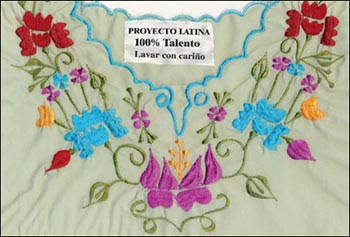

Tianguis books|libros 2003 S. Damen Chicago, IL 60608 www.tianguis.biz
Continuing with this month's focus on Chicago Latino literary life, this week's column will take a look at
Proyecto Latina, one of its constituent groups ,
Tianguis, and one of its organizers, Irasema Gonzales.
About Proyecto LatinaProyecto Latina is a collaborative between
Teatro Luna,
Tianguis, and Mariposa Atomica Ink. We are excited about showcasing Latina talent and are always seeking outgoing Latina poets and performers for our monthly open mic series. Proyecto Latina takes place the third Monday of every month. Its an open mic so everything's game: Poetry, spoken word, music, monologues, shorts y en el idioma que prefieras. And if you're too shy to get on stage come and be one of the lucky spectators.
Proyecto Latina -- Recent and upcoming performers/2007 Calendar
January 15th:
Diane HerreraFebruary 19th:
Luna Blues MachineMarch 19th:
Silvia RiveraApril 16th:
Sylvia ManriqueMay 20th:
Paloma Martinez-CruzJune 18th:
Lisa Alvarado.........it's shameless self promotion, forgive me.
...more dates coming soon...
Proyecto Latina's 2006 featured performers were: Belinda Cervantes, Maritza Cervantes, Tanya Saracho, Norbella Peña, Teatro Luna w/ Piece of Ass, Diana Campos, Achy Obejas, Coya Paz, Lupe Martinez, Yolanda Cardenas, Diana Pando, Irasema Gonzalez, Magda Banda, and Alicia Ponce.
WANTED: LATINA TALENTKnow someone we should feature? Is it you? We are always looking for established and emerging talent. Is it your mom, sister, bff, novia or vecina? Drop us a line, send us a sample of your work to: proyectolatina at tianguis dot com. Or sign-up for the open mic and show us what you got.
xxxxxxxxxxxxxxxxxxxxxxxxxxxxxxxxxx
It's a pleasure to talk to someone who's love of the written word is so deep and who's made a commitment to offer a literary showcase in the heart of the Mexican community here in Chicago. Tell us a little about yourself.
I was born and raised in Chicago. I began getting in trouble in fifth grade for reading books during class. Around the same time, I got the urge to write and began drafting stories in my notebooks. My parents noticed and when I was in 8th grade my dad bought me a typewriter for my birthday. I attended a public grammar school and a Catholic High School. Drama and writing activities at school were always my favorite outlets. In 1995, I entered Columbia College Chicago. Simply getting into college was a miracle since I had minimal guidance from my high school counselor, and as a first generation college student I was for the most part on my own.
I’m still a book lover and writer, and now also a blogger, and merchant. In 2006 I unveiled Tianguis, a cultural shop featuring books and work by Latino writers.
A few months later in January 2007 I helped co-found Proyecto Latina, a monthly open mic featuring emerging and established Latina talent. I meet with my writing group monthly for writing, chisme, and sangria, and in 2007 we published the chapbook, “Afternoon Wine: Vicios, Suenos y confesiones.”
My work also appeared in the anthology, “Between the Heart and the Land: Latina Poets in the Midwest, published by March Abrazo Press, 2000. I live with my wonderful husband and two cats in Chicago’s Little Village neighborhood. When I grow up I wanna be a mommy, live on a goat farm and get a dog—-and not necessarily in that order.
Irasema--Tell us about Tianguis. Some people would say: "A tea room in a Mexican neighborhood? No way!" What's your response to them?Well, we are not exactly a tea room. I think the word tearoom carries a certain connotation of formal afternoon teas or elaborate tea ceremonies. I’ve incorporated what I enjoy the most from tea and books into my concept—it was the kind of place I always wanted to frequent.
I am by no means an official spokesperson but tea definitely has its role in Mexican culture. There is Lemongrass or te de limon, manzanilla or chamomile, jamaica or hisbiscus tea is used to make an agua fresca, which is really an ice tea. And I’ve always enjoyed te de canela with a touch of milk.
You also represent one of three groups that came together to found Proyecto Latina. Talk to us about those groups, how they came together, and the purpose and focus of the project.When I first opened my store last year my friend, Diana Pando came to me with an idea that her and Coya Paz, from Teatro Luna had been talking about.
The idea was to have an open mic that would be by, for and all about Latina talent—we would feature established and emerging talent. I loved the idea and we’ve done it ever since. Every month we pick a Latina and we try to keep the features diverse, we’ve had actresses, musicians, comedians, poets, and writers. There is always eight open mic slots for interested participants. There are no hang-ups on language, the programming is bilingual and we’ve had Spanish, English and Portuguese work featured. Most recently we had a teacher that made a suggestion and ultimately inspired the chisme box.
That has been a really fun element to incorporate—people drop in anonymous chismes and we read them in between participants, the winning chisme gets posted on Proyecto Latina’s myspace account.
Who are the artists so far that have performed? Do you see a thread connecting their work? Is there a a general direction Proyecto Latina is attempting to forge? If so, what would that be, and how does that relate to the Chicago poetry/arts scene, and the Latino writing and arts community here in the city.All the women that have been featured have such presented phenomenal work, they include emerging and established talent. Some of last years highlights included Achy Obejas, Coya Paz and Teatro Luna ensemble, Diana Campos, Silvia Rivera, the Luna Blues Machine, and Lupe Martinez.
As for a common thread connecting their work I would probably have to say its the seriousness which all the women, including performers and our audiences members take the work. Its great to hear and identify with each others work without there being hang-ups on language or cultural nuances.
As a former writing student that sat in classes where many times, I was the only Latina, its empowering and exciting to see so many of my peers making such wonderful contributions—it’s a monthly reminder that we are in good company. I am one to definitely encourage an artist to create their own opportunities instead of waiting for the mainstream’s approval or permission—I think Proyecto Latina can help encourage that. And perhaps the result of those efforts will mean more visibility, or the initiative of even more creative projects by Latinas in this city.
What's the importance of Latina space for the development and presentation of writing?A Latina space is very important, it was something that was definitely missing. There are stories, songs, skits, that only we can tell. We hope to nurture and inspire others, and if nothing else at least provide an opportunity for fraternity and networking.
How would you say Proyecto Latina offers something different than the slam/spoken word scene, particularly as it seems that slam is now a pigeonhole for many writers of color?Most if not all, of our feature performers are working on very exciting projects. I personally am always asking for demo cd’s or encouraging self-publication of chapbooks, or online blogs—anything to get our work out there. We are always making a ton of announcements about other events, we are most definitely a busy crowd. We are writers and artists of color but we’re not letting that hold us back.
Who would be in your dream line-up and why?Hmmm, that’s a hard one. There is so much to pick from. Would this be a one hour event or a four day festival?
Where do you see Tianguis and Proyecto Latina ten years from now?Tianguis will hopefully have more bookshelves, cover a lot more square footage, and have the resources stock more books and host more readings by Latino writers. Proyecto Latina will still take place the third Monday of every month, and a new generation of Latinas will be making their contributions.
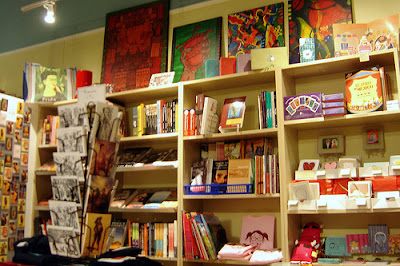 bookshelf photo credit: Cindy Mosqueda aka Cindylu/www.loteriachicana.net
bookshelf photo credit: Cindy Mosqueda aka Cindylu/www.loteriachicana.netIrasema GonzalezTianguisbooks|libros2003 S. DamenChicago, IL 60608www.tianguis.biz
xxxxxxxxxxxxxxxxxxxxxxxxxxxxxxxxxxxx
More news from Teatro Luna
| For Immediate Release |
| May 29, 2007 |
| Coya Paz (773.315.2575/ [email protected]) |
| Teatro Luna and Jane Addams Hull-House Museum collaborate in
OYE - LISTEN! |
| a new performance series |
| Teatro Luna and Jane Addams Hull-House Museum join forces to showcase new works by emerging, Chicago-based performing artists. Curated by Teatro Luna’s Co-Artistic Directors/Co-Founders Coya Paz, Tanya Saracho, and Managing Director Carol Ng, this unique series, named OYE- LISTEN!, features 2 to 3 artists or performance groups each month, followed by a half-hour post-show discussion at the Jane Addams Hull-House Museum. This collaboration between Teatro Luna and Jane Addams Hull-House Museum aims to provide women artists of color a space to share personal stories and reflect on contemporary social issues facing their community. OYE- LISTEN! will be an opportunity for both professional and practicing performing artists who show extraordinary talent to share and exchange their work. By remaining true to the lives and experiences of women of color, this series creates bridges among Chicago ethnic communities. Place: Jane Addams Hull-House Museum, Residents’ Dinning Hall (800 S. Halsted St, Chicago, IL 60607) Date: June 4, July 30, September 24, November 26 (Mondays) Time: 7:00pm – 8:30pm Performance, 8:30pm – 9:00pm Post-show discussion Performing artists: Lani Montreal, Yolanda Nieves, Sandra Santiago-Posadas, Gesel Mason, Toni Asante Lightfoot, Anida Yoeu Ali, Cristal Sabbagh, Francis Allende-Pellot, and more! This event is FREE. Light refreshment will be provided at the event. Reservations are recommended. Call Jane Addams Hull-House at 312.413.5353
|
| *** |
| About Jane Addams Hull-House Museum: | | The Jane Addams Hull-House Museum is part of UIC College of Architecture and the Arts and serves as a dynamic memorial to social reformer and Nobel Peace Prize recipient Jane Addams (1860-1935) and other resident social reformers whose work influenced the lives of their immigrant neighbors as well as national and international public policy. The Museum's exhibits and public programs preserves and develops the original Hull-House site for the continuation of the historic settlement house vision, linking research, education, and social engagement. |
| |
| About Teatro Luna: | | Teatro Luna is Chicago’s first and only all-Latina theater company. Founded by Tanya Saracho and Coya Paz in 2000, Teatro Luna is dedicated to expanding the range of Latina/Hispana representation on the Chicago stage and beyond. Previous shows include Generic Latina, Dejame Contarte, Kita y Fernanda, The Maria Chroniclesm Solo Latinas, S-e-x-Oh!, Quita Mitos, and Lunaticas. |
| |
|
Lisa Alvarado

By: Lisa Alvarado,
on 5/23/2007
Blog:
La Bloga
(
Login to Add to MyJacketFlap)
JacketFlap tags:
storytelling,
theater,
feminism,
women of color,
women's studies,
Latina performance,
women and performance,
Teatro Luna,
sex positive,
Add a tag

Teatro Luna was founded in June 2000 by Coya Paz and Tanya Saracho, with an original ensemble of ten women from diverse Latina/Hispana backgrounds. We came together because we realized that the stories and experiences of Latina/Hispana women were undervalued and underrepresented not only on the Chicago stage, but beyond.
Many of us had similar experiences of being asked to perform stereotyped images of ourselves that were often one-dimensional and, at times, offensive: spicy sexpots, voiceless maids, pregnant gangbangers, timid "illegal" immigrants, etc. We were also concerned that the few parts written for Latina women often went to non-Latina actresses. We felt that we had to do something. Our answer was Teatro Luna, Chicago's first and only all-Latina theater.
xxxxxxxxxxxxxxxxxxxxxxxxxxxxxxxx

Teatro Luna, Chicago’s only all-Latina Theater company is pleased to announce the world premiere of LUNATIC(a)S, a new play about women’s everyday insanity.
LUNATIC(a)S
From Chicago-style road rage to an obsession with catching muggers, LUNATICAS uses Teatro Luna’s trademark humor and honesty to tell a truth we don’t always want to tell: Sometimes, we’re just a little bit crazy.
Directed and developed by award-winning playwright Tanya Saracho,
LUNATIC(a)S tackles Teatro Luna’s namesake The Moon (La Luna) and places our true-life stories in the context of myths and superstitions about women, Latinas, and the moon.
LUNATIC(a)S follows Teatro Luna’s critically acclaimed shows Quita Mitos and S-e-x-Oh!, bringing a range of Latina stories to light. Reimagining the Mayan goddess lx Chel as a modern day urban Latina, LUNATIC(a)S moves from the mythical (the moon is always female) to the serious (violent mothers) to the tragically hilarious (the slow slide from jealous girlfriend to bonafide stalker). As always, Teatro Luna is cheeky, straightforward, and willing to tell even the most outrageous secrets about our Latina lives.
Where: Chicago Dramatists, 1105 W. Chicago, Chicago, IL
When: PREVIEWS: June 1st, 2nd and 3rd 2007 || OPENING: Thursday June 7th, 2007 || RUNS FROM: June 7th to July 15, 2007 (Thursdays @ 7:30pm, Fridays and Saturdays @ 8pm, and Sundays @ 3pm)
Who: PERFORMED: by Belinda Cervantes, Maritza Cervantes, Gina Cornejo, Yadira Correa, Miranda Gonzalez, and Suzette Mayobre. DIRECTED AND DEVELOPED BY: Tanya Saracho
How Much?: PREVIEWS: $10, $7 Students (ID required) || GENERAL: $15, $10 Students (ID required), Groups of 8 or more, $12
For Reservations: Call 773-878-LUNA
For more information visit: www.teatroluna.org
As all Teatro Luna shows, LUNATIC(a)S is performed in English with a sprinkle of Spanish.
Important note: This show features frank discussion about intimate topics as well as images of real women’s bodies and may not be appropriate for younger audiences.
About Teatro Luna:
Teatro Luna is Chicago’s first and only all-Latina theater ensemble dedicated to creating work that showcases the talents of Latina/Hispana artists. Founded by Tanya Saracho and Coya Paz in 2000, Teatro Luna is dedicated to expanding the range of Latina/Hispana roles visible on the Chicago stage and beyond. Previous shows include Generic Latina, Dejame Contarte, Kita y Fernanda, The Maria Chronicles at Theatre on the Lake, and Solo Latinas at Chicago Dramatists. In addition, Teatro Luna is frequently asked to bring their trademark blend of ensemble performances to theatres, universities and festivals across the county. www.teatroluna.orgxxxxxxxxxxxxxxxxxxxxxxxxxxxxxxxx
Teatro Luna announces auditions for our fall run of MACHOS, an interview based project drawn from conversations with men all across the country.
We are looking for Latina/Hispana performers of all ages who are comfortable and able to play MEN. Previous performance experience is a plus, but not mandatory.
Performers must be able to commit to the following dates:
Performances Thursdays through Sundays,
November 1-Dec 15th.
Rehearsals Tuesdays, Wednesdays, and Sundays
starting September 4th.
Performance/writing workshops twice a week (TBD)
June 15-July 15th
Auditions for Machos will be held June 2nd, between 10am and 2pm. To schedule an audition, please e-mail
[email protected] with your preferred time (15 minute slots) and a phone number where you can be reached.
To audition:
-Please come dressed to show us that you can perform as a man. We are looking beyond the stereotypes, so whatever that means to you! (There is a changing room available if you would like to change before or after your audition.)
-Please prepare a short (1-2 minutes MAX) original piece - it can be a joke, a story, some chisme, a monologue, a poem, lo que sea - we just want to get a sense of what you have to say and how you say it! Pieces should be memorized if possible.
-Please bring a recent headshot or photo, and a copy of your resume.
Teatro Luna is Chicago's first and only all-Latina theater company. Visit us on the web at
www.teatroluna.org and don't miss our upcoming show Lunatic(a)s, playing June 1-July 15th at Chicago Dramatists.










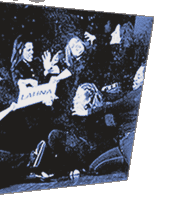





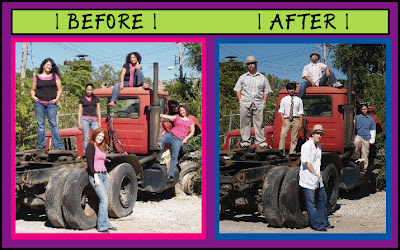










that's some good loving, herrera, enough to turn a bilingual educator into a code-switching loco, and more than enough to twang a chicano heart.
gracias, y sigue cantando.
RudyG
raúlrsalinas' work epitomizes both chicano and unitedstatesian art in so many ways. over at gemini there is a series of five videos featuring the aged poet reading his own stuff.
http://www.geminiink.org/salinas/
hey, lisa! glad to see you're gonna perform soon. while we're all morose over our fallen comrades, it's always great reminding gente, especially kids, that we, they, are the future. adelante!
"in liberation" indeed!
powerful - thanks so much - I'll share with my students next week - Lisa Alvarez